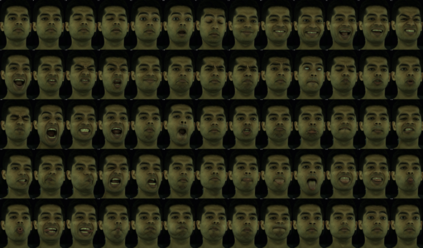Photorealistic avatars of human faces have come a long way in recent years, yet research along this area is limited by a lack of publicly available, high-quality datasets covering both, dense multi-view camera captures, and rich facial expressions of the captured subjects. In this work, we present Multiface, a new multi-view, high-resolution human face dataset collected from 13 identities at Reality Labs Research for neural face rendering. We introduce Mugsy, a large scale multi-camera apparatus to capture high-resolution synchronized videos of a facial performance. The goal of Multiface is to close the gap in accessibility to high quality data in the academic community and to enable research in VR telepresence. Along with the release of the dataset, we conduct ablation studies on the influence of different model architectures toward the model's interpolation capacity of novel viewpoint and expressions. With a conditional VAE model serving as our baseline, we found that adding spatial bias, texture warp field, and residual connections improves performance on novel view synthesis. Our code and data is available at: https://github.com/facebookresearch/multiface
翻译:近些年来,人类面部的摄影真实性反射过程取得了长足的进展,然而,由于缺少公开可得的高质量数据集,包括密集多视照相机拍摄,以及被捕获对象的丰富的面部表情表现形式,这一领域的研究受到限制。在这项工作中,我们介绍了从真实实验室研究13个身份中收集的新的多视高分辨率人类面部数据集,用于神经面部造影。我们引入了大型多镜头仪器Muggsy,用于捕捉面部表现的高分辨率同步视频。多面片的目标是缩小学术界在获取高质量数据方面的差距,使VR远程感光学研究成为可能。在发布数据集的同时,我们还就不同模型结构对模型新观点和表达的内插能力的影响进行了模拟研究。我们发现,以一个有条件的VAE模型作为我们的基线,我们发现添加空间偏差、纹理扭曲场和剩余连接改善了新观点合成的性能。我们的代码和数据在https://githhuthub.com/paceressearchressearchressearchasimeximasimressimseargraphy











